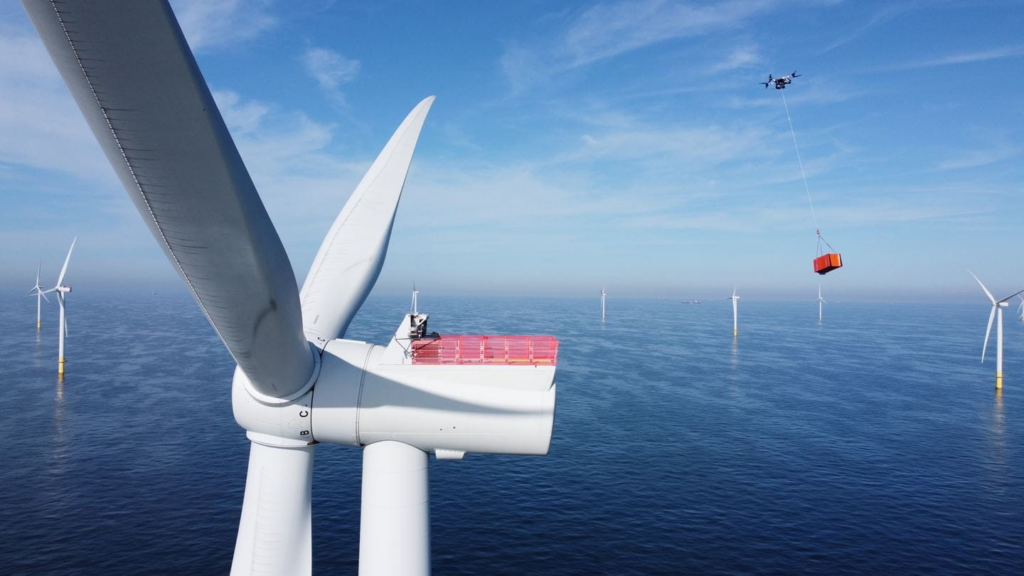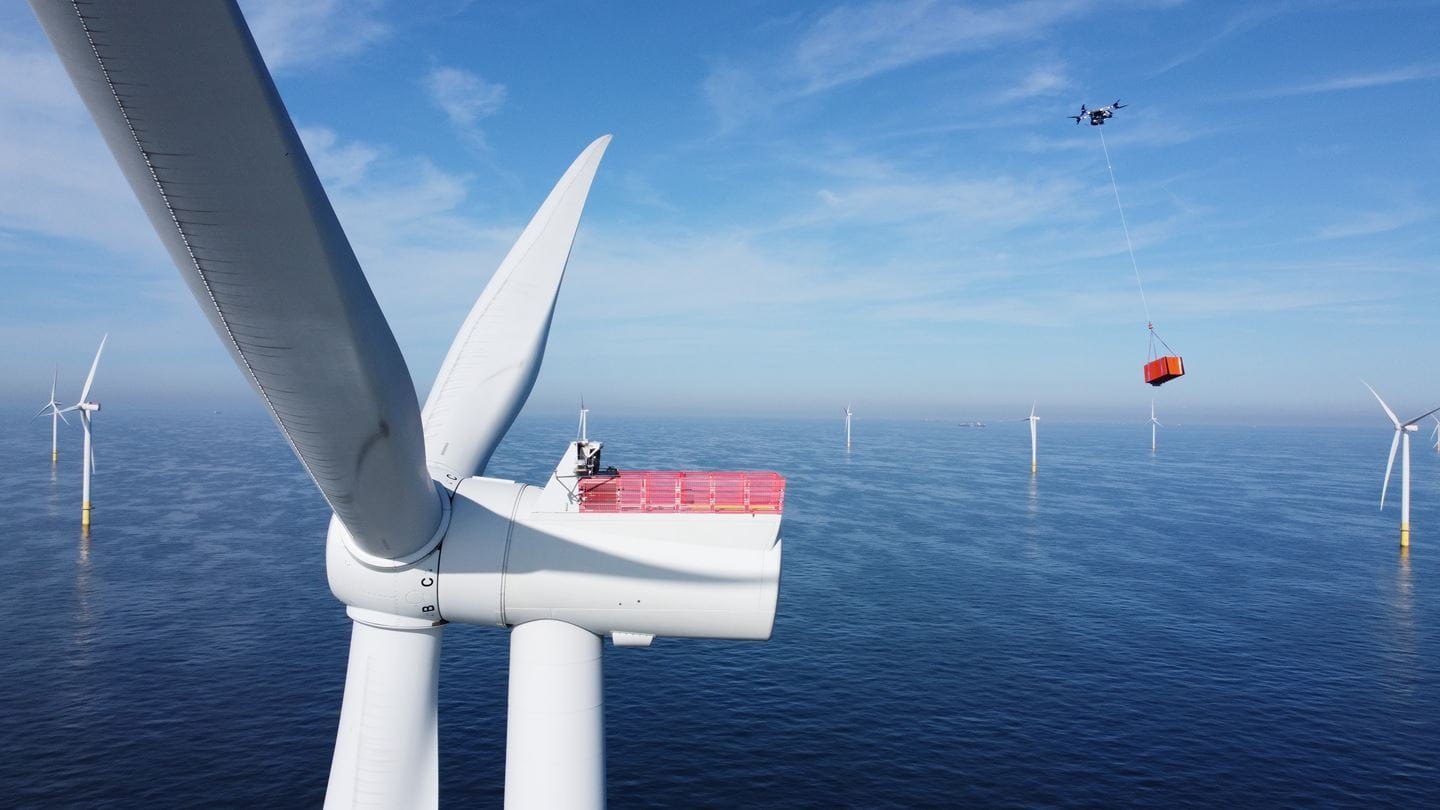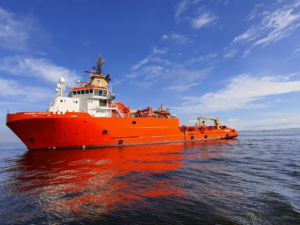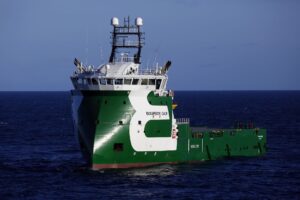
Denmark’s offshore wind specialist Ørsted is deploying heavy-lift cargo drones (HLCD) for the first time in an operational campaign at the Borssele 1&2 offshore wind farm.
The heavy lift cargo drone will transport cargo from a vessel to all 94 wind turbines of the Borssele offshore wind farm.
Building on previous trials and expertise using drones in other offshore wind farms, Ørsted is using the 70 kg drones – which have a wingspan of 2.6 metres – to transport cargo of up to 100kg, in an actual operations campaign, after the concept was tested last year at the Hornsea 1 Offshore Wind Farm in the UK.
For this specific campaign, Ørsted has decided to update some critical evacuation and safety equipment in each of the turbines.
Normally, a vessel would sail from one wind turbine to the next, using a crane to lift each box containing the equipment onto the transition piece, after which the box would be lifted with the nacelle’s crane to reach the nacelle and then be moved to the top of the turbine.
Instead, the drone will simply fly back and forth from an offshore supply vessel directly to the top of the nacelle.
The drone flight from the vessel to the turbine takes about four minutes per turbine, while the conventional approach without using drones can take approx. six hours.
Taking vessel transport between the turbines and from-and-to shore into account, Ørsted has been able to complete the tasks at Borssele 10-15 times faster than normally.
Rasmus Errboe, chief commercial officer and deputy-CEO at Ørsted, said: “The drones at Borssele 1&2 are a great example of this, as they will improve safety, bring down carbon emissions, and reduce the cost of operating offshore wind farms, which all further improve the commercial fundamentals of offshore wind for investors, governments, and corporations.”
According to Ørsted, the use of drones to deliver cargo to Borssele 1 & 2 will reduce costs and time as well as improve operational safety and efficiency.
“Drones mean less work disturbance as wind turbines do not have to be shut down when cargo is delivered. They prevent risk, making it safer for personnel working on the wind farm, and they minimise the need for multiple journeys by ship, reducing carbon emissions in the process,” the company said in a statement.



